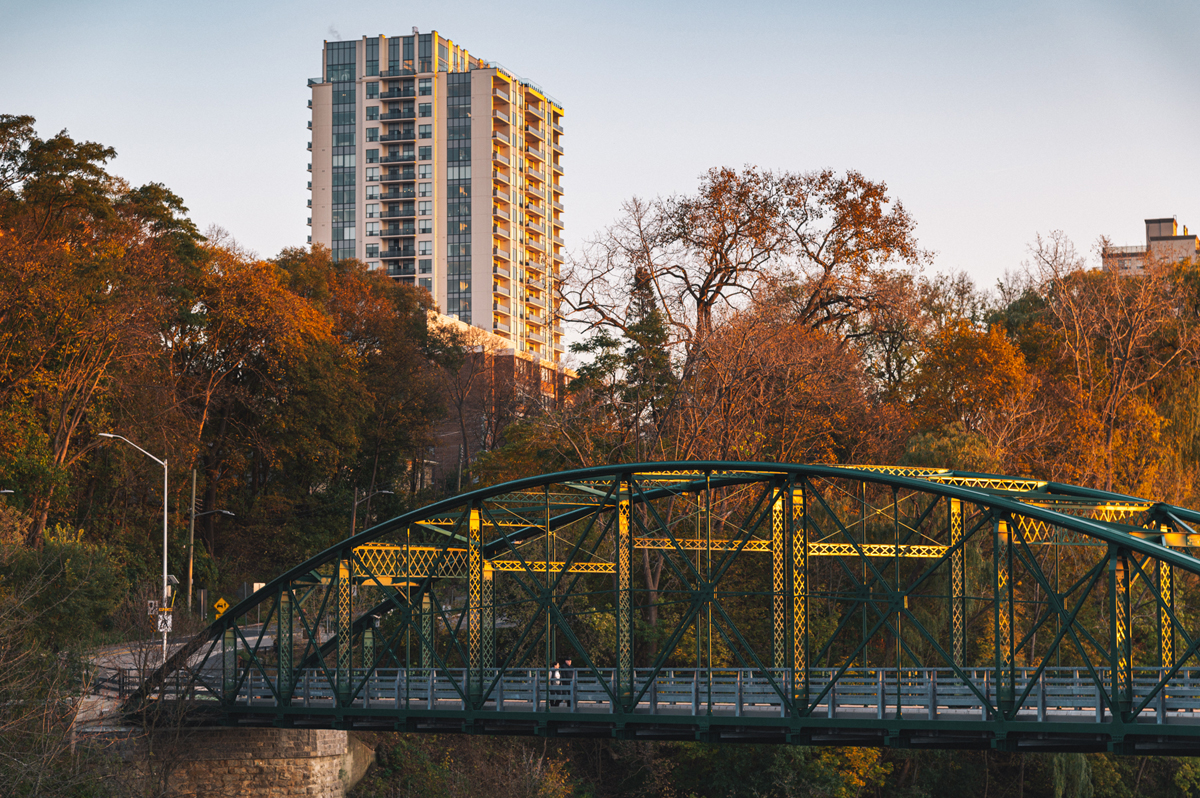London, Ont., residents are being given the opportunity to weigh in on the future of the Blackfriars Bridge as part of a city-led study that will examine whether the heritage crossing should continue being used by vehicles.

The study, which began recently involving Western’s Human Environments Analysis Laboratory, includes an online survey that Londoners can take to provide data to the city about how they use the bridge, including how often, why, and by what modes of transportation.
“We’re … really looking to hear from Londoners and from users of the bridge around their thoughts related to how they use this bridge and the role of the bridge in the community,” said Garfield Dales, division manager of transportation, planning and design at the city.
“We’re looking at travel patterns and behaviours in the area. We’ve also been out surveying users right at the bridge site. And then the other part is the survey that’s online through the city’s Get Involved site.”
The bridge, which has linked the Blackfriars neighbourhood to the city’s core for nearly 150 years, reopened to downtown-bound vehicles just over a year ago after spending the preceding 19 months as a cyclist and pedestrian-only crossing.
- As Loblaw boycott begins, what to know about all the company’s brands
- Poilievre booted from House of Commons after calling Trudeau a ‘wacko’
- $34B Trans Mountain pipeline expansion project opens after years of construction
- N.S. man stuck abroad due to lack of available hospital beds ‘in our own province’
The city had blocked vehicle access to the bridge in April 2020 to allow physical distancing for cyclists and pedestrians during the COVID-19 pandemic as more people turned to active transportation and the Thames Valley Parkway to avoid car sharing and public transportation.
Late last year, city officials announced that the bridge would begin allowing vehicular traffic again, albeit eastbound only, citing a return to normal activity levels on the parkway, a drop in COVID-19 cases, higher vaccination rates, and loosening pandemic restrictions.
An online petition calling for the bridge to remain closed to vehicles garnered more than 1,200 signatures, with active transportation advocates arguing the bridge had thrived during the pandemic as a river crossing for area pedestrians and cyclists.
A motion from Ward 12 Coun. Elizabeth Peloza to keep the bridge closed during the study, a requirement under the environmental assessment process relating to the bridge’s restoration four years ago, was defeated at city council, with politicians instead voting 8-5 in favour of reopening the bridge.
“My basic hope here would be that the city just decides to revert back to what they had during the initial lockdowns and move towards it being a pedestrian and cycling space,” said Chris DeGroot, an active transportation advocate who started the online petition to keep the bridge closed.
While the long-term usage study will collect traffic pattern and volume data for the bridge, anecdotally, DeGroot says he has observed lower traffic numbers on the bridge, “indicating that it’s not a very important corridor for carrying traffic to the downtown area.”
“Second of all, I think that having the traffic at a relatively low volume … makes for some unexpected interactions at that crossing on the east side of the bridge, where a lot of pedestrians and cyclists maybe don’t expect cars to be coming.”
He adds he’s heard from others involved in the city’s active transportation community who would like to see the bridge returned to its previous carless state.
“I think that’s even more reinforced with the new path that’s on the west side of the river that extends from Blackfriars neighbourhood all the way to Oxford Street,” he said.
“Now you have crossovers on both sides, and it makes for … a conflicting environment between active users and vehicles. There’s not excellent signage in that area, so I think that a lot of times drivers pass through fairly unaware that there (are) multi-use paths crossing and don’t react accordingly.”
The survey will continue through the winter, allowing more people to contribute to the final study, which will be presented next year to city councillors who will make a final decision, Dales said.
“Our hope would be to summarize this study and bring a recommendation forward to council before the summer of next year,” he said.
More information on the study, including a link to the online survey, can be found on the city’s website.
The bridge’s closure during the pandemic marked the second time vehicles had been barred from using the crossing in less than a decade. From 2013 until it was removed for restoration in late 2017, cyclists and pedestrians were the only ones allowed on the bridge due to structural integrity concerns.
The wrought iron bridge, erected in 1875, was designated a heritage structure in 1992 and is one of a small number of bridges like it still in active use. In 2016, the bridge was recognized as a National Historic Civil Engineering Landmark by the Canadian Society for Civil Engineering.
— with files from Andrew Graham and Jake Jeffrey








Comments